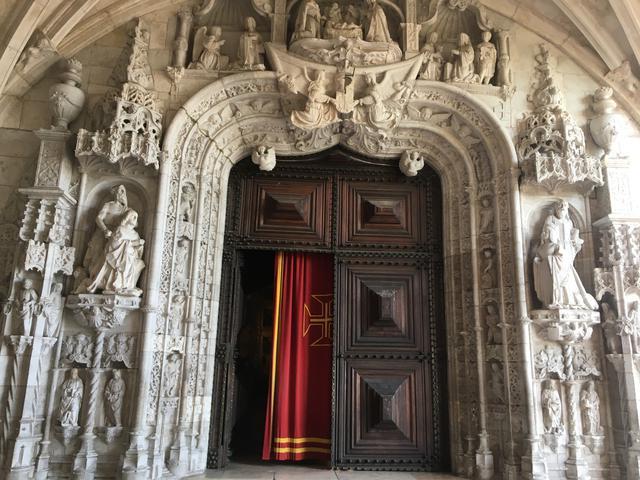Portal principal (occidental)

The main portal of the church is a true masterpiece of Renaissance art, showcasing intricate details and symbolic elements that tell a story of religious significance. As visitors approach the entrance, they are greeted by a stunning display of statues and carvings that reflect the rich history and cultural heritage of Portugal. The portal serves as a gateway to the main altar, symbolizing the spiritual journey of those who enter the sacred space.
The statues of the Founding Kings, King D. Manuel and Queen D. María, are prominently displayed on either side of the portal, accompanied by their respective patron saints. These figures are depicted in a posture of reverence and devotion, embodying the royal lineage and religious devotion of the monarchs. The angel holding the shield of arms and coins further emphasizes the connection between earthly power and divine protection, underscoring the importance of faith in the lives of the rulers.
Above the statues, stone cherubs hold the arms of Portugal, a poignant reminder of the nation's history and identity. The broken arms, a result of the tragic death of King D. Sebastião, serve as a somber reminder of the impermanence of earthly power and the fragility of human life. The scenes depicted in the niches at the top of the portal, including the Annunciation, Nativity, and Epiphany, offer a visual narrative of key moments in Christian tradition, inviting contemplation and reflection from visitors.
The craftsmanship and artistry of the portal, executed by the skilled hands of the French master Nicolau de Chanterenne in 1517, are a testament to the talent and dedication of the artisans of the time. The intricate details and symbolic motifs woven into the design of the portal speak to a deep understanding of religious iconography and architectural aesthetics. As visitors stand before this magnificent work of art, they are transported back in time to an era of faith, devotion, and artistic excellence.
In front of the main door, a spacious terreiro once extended, providing a gathering place for worshippers and visitors alike. The construction of the vestibule in 1625 altered the layout of the space, but the grandeur and significance of the portal remain unchanged. Today, the main portal stands as a testament to the enduring legacy of Portugal's religious and cultural heritage, inviting visitors to step into a world of beauty, symbolism, and spiritual contemplation.
© ChatGPT 3.5